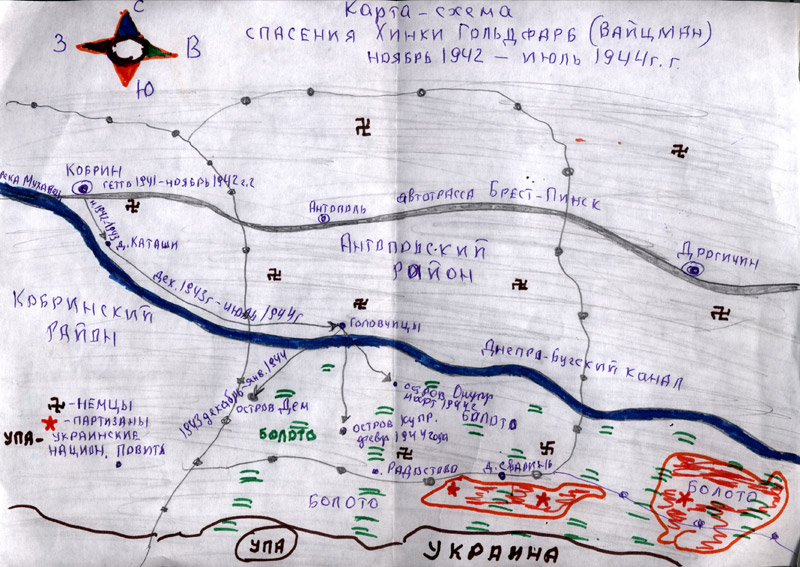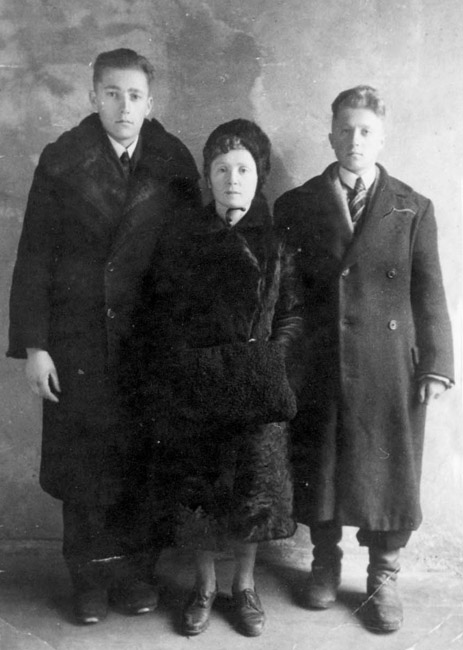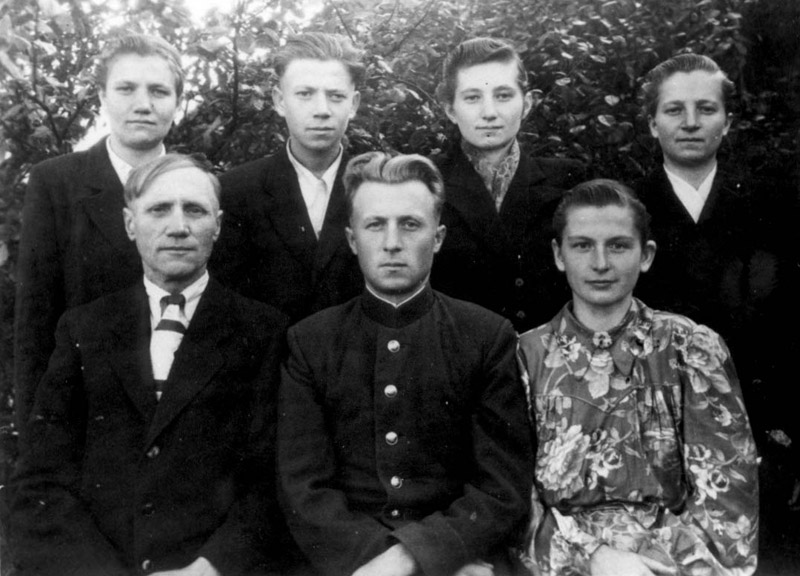Hinka Goldfarb lived in Kobryn, Polesia (today Belarus). The Germans occupied the town on June 23, 1941, and five months later established a ghetto, where they crowded together 8,000 Jews. In July 1942, about 3,000 Jews from the ghetto were taken to Brona Gora and murdered. Most of the others were left to live for another three months, and were killed in October 1942. About 500 managed to escape to the forest in the midst of an armed uprising by the local underground, but most of them were hunted down and killed. Hinka was among those who escaped into the surrounding woods. She was running with the Germans on her heels, when a stranger opened his home to her. She slipped in and the rescuer mislead her pursuers by pointing them into a wrong direction.
The stranger was a Baptist pastor by the name of Iosif Narzaruk, who lived in an isolated farm in Lyakhchisty. The pastor's family took care of Hinka, and Nazaruk even went to look for Hinka's mother and brought her to his home. Eventually he also went to search for Hinka's husband, Shimon Minaker, who had been in a forced labor camp. Another doctor and his mother were also sheltered by the good pastor, bringing the number of people under his care to five. They all stayed there for a year, until Russian partisans came and took the hiding Jews by force to build a road through the marshes. All except Hinka were killed.
After the war Hinka returned to Korbin, but only few of the community had survived. She married another survivor from her hometown, who, like her, was the sole survivor of his family. The couple began their journey westward, and eventually immigrated to Israel in 1948.
In 1995 Nazaruk's daughter wrote to Yad Vashem and told about her father’s rescue of Jews. By that time Hinka had passed away, but a testimony she had submitted to Yad Vashem in 1966 was found, where she described her rescue. Thus Iosif and Anna Nazaruk were recognized as Righteous Among the Nations.



